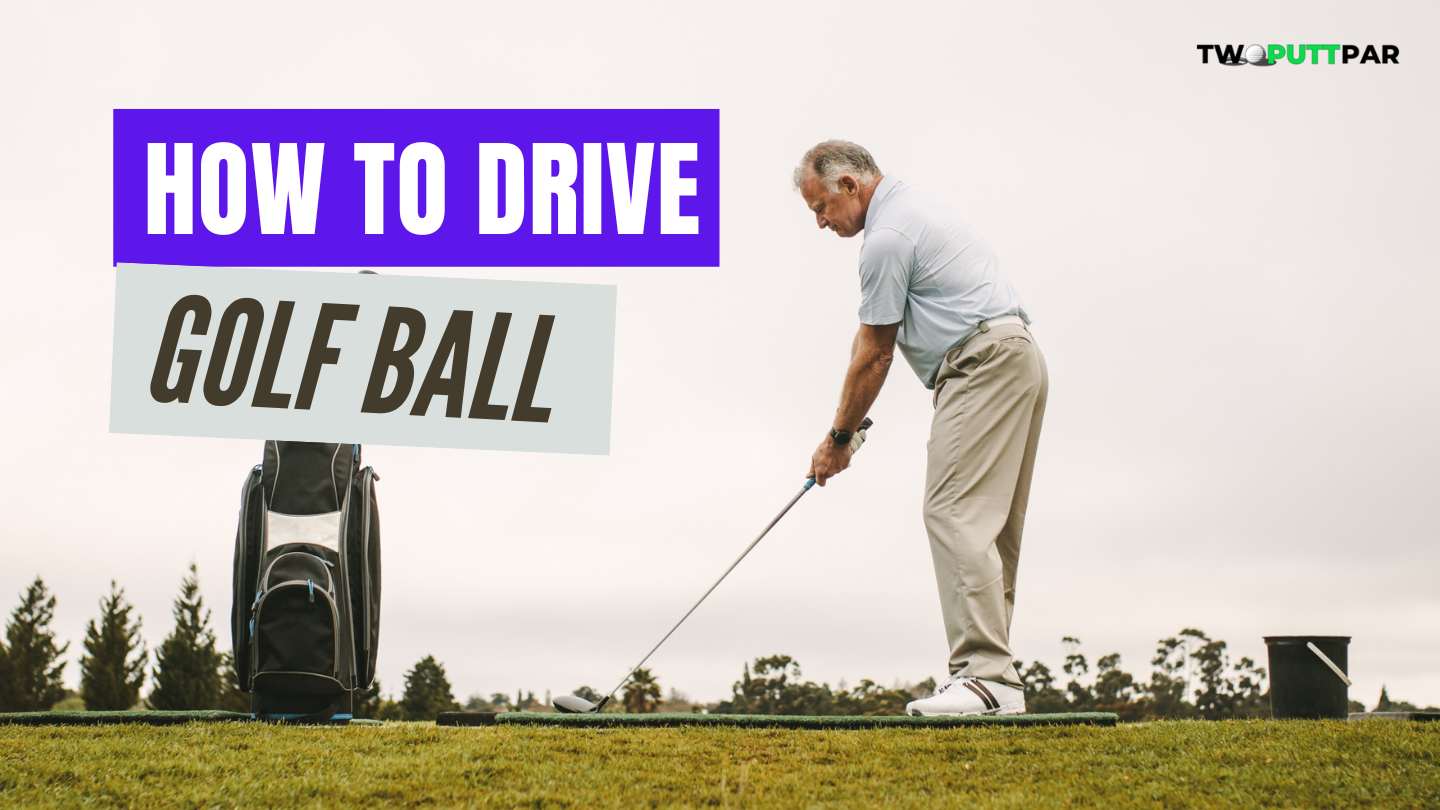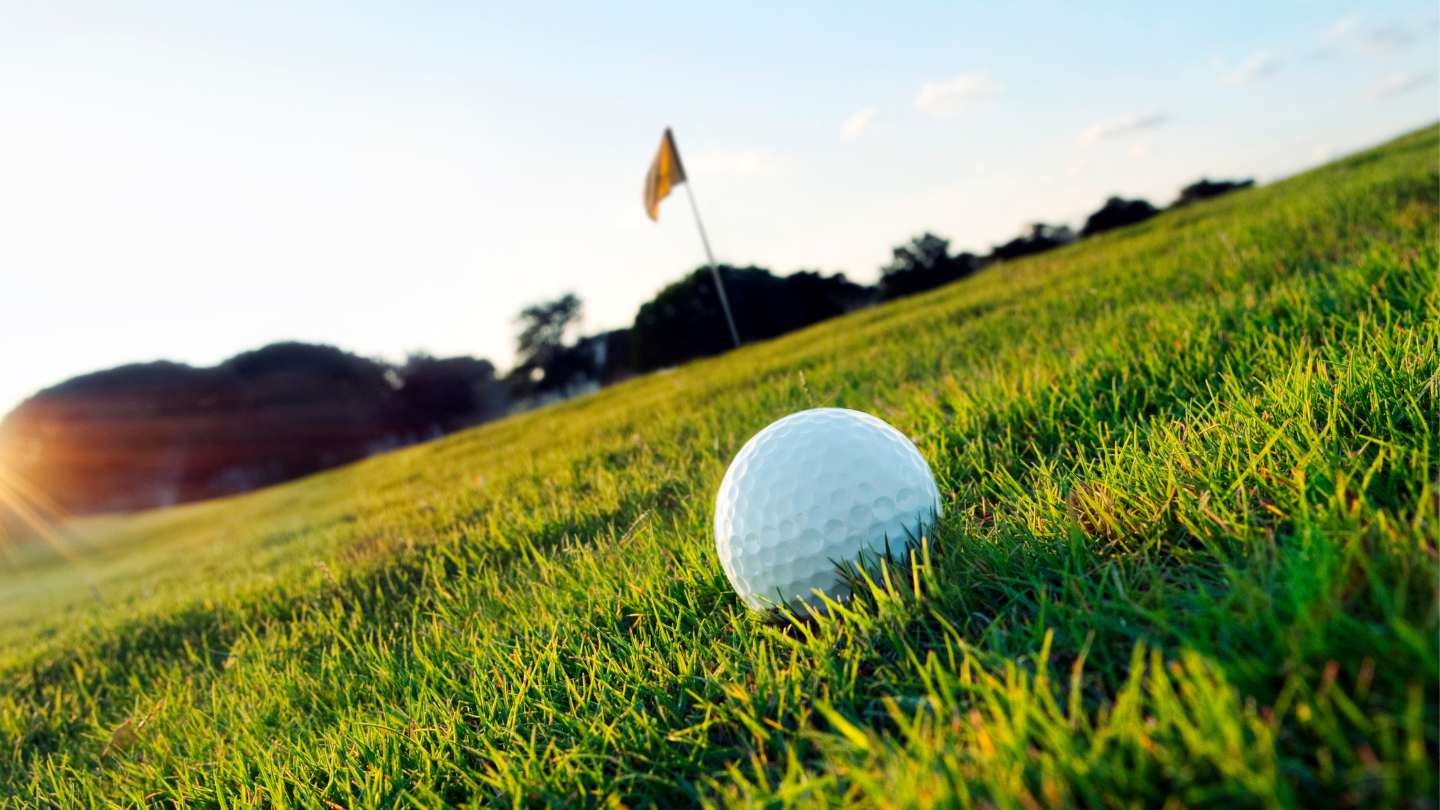
Mid-Handicap golfer who loves to share his rounds and experiences playing courses all around the UK in a hope that it will help others find those hidden gem golf courses.
I seek out golf courses that don’t get the credit they deserve and are often overlooked for the bigger more well known ones.
Driving a golf ball may seem like a simple task, but it actually requires proper technique and form.
This blog post will provide golfers with an in-depth guide on how to drive a golf ball.
So if you want to up your game and impress your fellow golfers, keep reading!
Driving a golf ball effectively involves mastering a balanced and steady swing, maintaining a correct stance, achieving a strong impact position, and ensuring consistent follow-through.
How To Drive a Golf Ball
Driving a golf ball involves a combination of:
Getting Ready to Drive
Before you swing, it’s important to mentally prepare yourself. Visualise the trajectory you want your ball to follow and the spot where you want it to land.
Make sure you’re relaxed and focused, with your body loose and ready for the swing. This mental and physical preparation is crucial for a successful drive.

Correct Ball Position
The position of the ball can significantly influence the success of your drive.
As a general rule, when using a driver, the ball should be positioned so that it’s in line with the inside of your leading foot (that’s your left foot if you’re right-handed).
This position allows for maximum loft and distance as you strike the ball on the upswing.
Choosing the Right Tee
The tee you choose can also impact your drive. For drivers, a higher tee (typically around 5 cm) is often preferred.
This height allows the ball to sit halfway above the top of the driver when grounded, providing the optimum angle for achieving distance and reducing the risk of hitting the ground before the ball.
Proper Grip and Stance
A good grip is key to controlling your swing and hence the flight of the ball.
Your hands should form a ‘V’ shape with your thumbs and index fingers, pointing towards your right shoulder if you’re right-handed.
Your stance should be stable and balanced, with your feet around shoulder-width apart. Your body should be aligned with the target, and your weight evenly distributed between your feet.
Perfecting Your Swing
Perfecting your swing is fundamental to driving a golf ball effectively.
Begin by positioning your body correctly: your feet should be shoulder-width apart with the ball aligned with the inside of your leading foot.
Maintain a relaxed posture, bending slightly at the knees and hips. As you swing, ensure your hands are leading the clubhead at impact to deliver a powerful, accurate strike.
The Backswing
The backswing sets the tone for the rest of your swing. It’s important to take it slow and steady.
Start by turning your shoulders and hips away from the target, allowing your weight to shift naturally to the inside of your trailing foot.
Keep your lead arm straight as you lift the club, forming an L-shape between your arm and the club shaft at the top of your backswing.
Generating Power
Generating power in your golf swing comes from a combination of your rotation and the speed of your downswing.
As you begin your downswing, rotate your hips towards the target while keeping your upper body coiled, creating a ‘lag’.
Release this lag as you approach the ball to generate maximum power. Remember, power comes from speed, not effort.
Impact Position
The impact position is crucial in determining the direction and distance of your golf shot. At impact, your hips should be open to the target, and your lead wrist should be flat.
Your trailing elbow should be close to your body to ensure the clubhead travels straight towards the target. Your head should remain behind the ball at impact to promote a high launch angle.
Find out – How Much Does a Golf Ball Weigh?
Tips for Driving the Ball
Driving a golf ball effectively involves mastering certain techniques such as:
When driving the ball, ensure your stance is balanced and your grip on the club is neither too loose nor too tight. Align your body parallel to the target line with your feet shoulder-width apart.
The ball should be positioned in line with your lead foot’s heel. As you swing, keep your eye on the ball and follow through completely.
Managing Distance and Accuracy
Distance and accuracy are vital elements of a good golf drive. To maximise distance, maintain a smooth and steady swing pace, and ensure your clubface strikes the ball squarely.
For accuracy, focus on controlling your clubface alignment and path. It’s better to make a slower, controlled swing that hits the target than a fast, uncontrolled swing that doesn’t.
Improving Your Swing Speed
Improving your swing speed can increase the distance your ball travels.
Incorporate exercises that enhance your core strength and flexibility into your fitness routine.
On the course, work on timing your swing so that you achieve maximum clubhead speed at the point of impact, not before or after. Remember, a faster swing speed requires a balance of control to maintain accuracy.
Avoiding Common Mistakes
Avoid common mistakes to improve your golf drive.
One common error is swinging too hard, which can throw off your balance and timing. Instead, focus on maintaining a smooth, rhythmic swing.
Another mistake is lifting your head too early to watch the ball flight, which can result in a poor strike. Stay focused on the ball until after impact. Lastly, ensure you’re using the right club for your skill level and the specific shot you’re attempting.
Troubleshooting Common Issues
Driving a golf ball effectively requires mastering certain techniques, understanding common issues, and knowing how to troubleshoot these problems.
This involves fixing a slice, correcting a hook, and dealing with inconsistency.
Fixing a Slice
A slice, where the golf ball curves dramatically to the right for right-handed players (or to the left for left-handed players), is often due to an outside-in swing path.
To fix this, adjust your grip by turning both hands slightly to the right (for right-handed players) on the club. Work on your swing path to make it more in-to-out, and ensure your body alignment is parallel to the target line.
Practice swinging the club slowly and gradually increase speed as you gain control and consistency.
Correcting a Hook
A hook, the opposite of a slice, results in the ball curving significantly to the left for right-handed players (or to the right for left-handed players). This is typically caused by an inside-out swing path.
To correct a hook, adjust your grip so that your hands are turned slightly to the left (for right-handed players). Align your body towards the target, ensuring your feet, hips, and shoulders are parallel to the target line.
Like with the slice, start practicing with slow swings and gradually increase speed for better control and consistency.
Key differences – Golf Slice vs Hook
Dealing with Inconsistency
Inconsistent golf drives can be frustrating and are often down to a few common issues.
Firstly, ensure your setup is consistent for every shot, including your grip, stance, and ball position.
Secondly, work on your swing mechanics to ensure they’re smooth and controlled, remembering that power should come from your body’s rotation rather than just your arms.
Lastly, mental preparation is key to consistency in golf. Stay focused, visualise the shot before you play it, and try to maintain a positive outlook, even when things don’t go to plan.
FAQs
Q: Where should I position the golf ball when driving?
A: The ball should be positioned near the left heel (for a right-handed golfer) to ensure proper contact and a straight ball flight.
Q: What is the importance of tee height when driving a golf ball?
A: The tee height affects the launch angle of the ball. For most drivers, a tee height where half the golf ball is above the top of the club is recommended.
Q: How can I hit the golf ball straighter off the tee?
A: To hit the ball straight, focus on a square swing path, proper shoulder alignment, and a balanced follow-through.
Q: Why am I struggling to hit the golf ball straight?
A: Struggling to hit the ball straight could be due to various factors such as misalignment, inconsistent swing path, or improper weight transfer.
Q: Can you give me some tips on how to hit the golf ball straight?
A: One pro tip is to ensure your grip is not too tight, as this can lead to tension and an off-centered strike. Also, practice your swing tempo and stay relaxed throughout the swing.
Q: What should I focus on during the backswing when driving a golf ball?
A: During the backswing, focus on a smooth and controlled movement, maintaining proper wrist hinge, and turning your shoulders away from the target.
Q: How can I generate more power when driving a golf ball?
A: To generate more power, focus on a proper weight transfer, initiate the downswing with your lower body, and maintain a good tempo throughout the swing.
Q: What are some common mistakes amateur golfers make when driving a golf ball?
A: Some common mistakes include poor alignment, swinging too hard, casting the club, and lifting the head too early.
Q: Why do I sometimes slice the golf ball when driving?
A: Slicing the ball often occurs due to an open clubface at impact and an outside-to-in swing path. Practice proper grip and swing mechanics to reduce slicing tendencies.
Conclusion
Remember that driving a golf ball is not just about sheer power, but also about precision and control. It requires practice and patience to perfect your driving skills.
By incorporating these techniques into your game, you will see an improvement in both distance and accuracy off the tee.
Affiliate Disclaimer – As an affiliate, we may earn a commission from qualifying purchases. We get commissions for purchases made through links on this website from Amazon and other third parties.





Leave a Reply